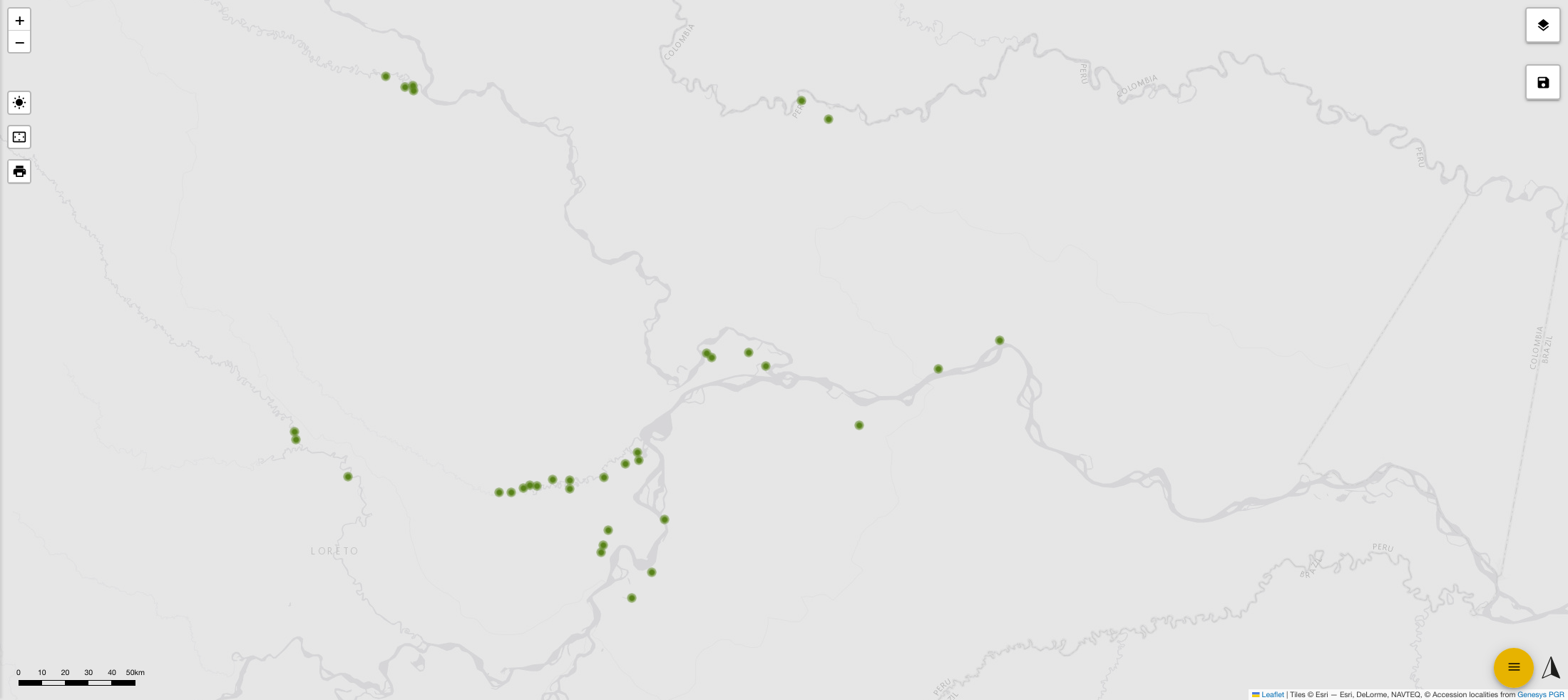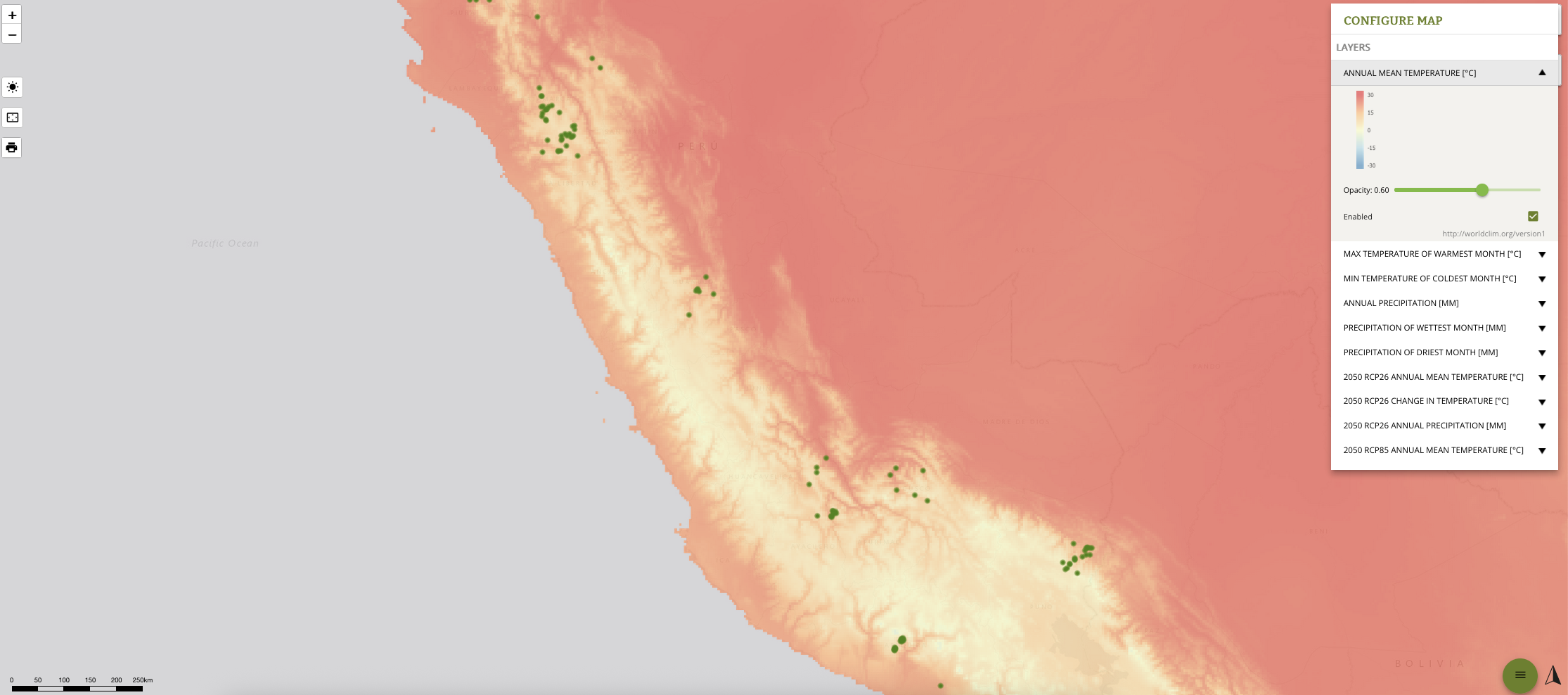
Peru’s national genebank shares data on Genesys
November 13, 2025
Genesys welcomes INIA, Peru’s national genebank, as a new data provider.
The national genebank of Peru at the Instituto Nacional de Innovación Agraria (INIA), has signed a Data Provider Agreement with Genesys, and published a first batch of data on such native crops as camu camu (Myrciaria dubia), rocoto (Capsicum pubescens), and pijuayo (Bactris gasipaes).
Camu camu is a tropical fruit native to the Amazon basin and is celebrated for its extraordinary concentration of vitamin C, and long-standing cultural significance among Indigenous peoples such as the Yanomamo and Kayapo. It thrives along the floodplains of the Amazon rivers in Peru, Venezuela, Brazil, Colombia, and Bolivia, and has been harvested for thousands of years by guiding canoes through its branches during the wet season (Phelan & Smith 2022).

Figure 1. Locations of accessions of camu camu conserved by INIA Peru, as published in Genesys, showing their distribution along river systems.
Rocoto is one of the oldest domesticated chili peppers in the Andes. It grows at high elevations of up to 3,000 m above sea level, where few other peppers can thrive, and is recognized for its thick, fleshy fruits, vibrant colors, and distinctive heat. Beyond its culinary value, rocoto is prized for its tolerance to cold and unique genetic traits that make it an important resource for breeding resilient pepper varieties. Its fruits are also a rich source of vitamin C, about two to three times higher than lemon, and contain powerful antioxidants (Meckelmann et al., 2015).

Figure 2. Locations of rocoto accessions conserved by INIA Peru and now published in Genesys, displayed on an annual mean temperature map, highlighting their clustering in the high Andes, where average annual temperatures approach 0 °C.
Pijuayo, also known as peach palm, was domesticated thousands of years ago by Indigenous peoples, and it continues to play a vital role in local livelihoods in Peru and neighbouring countries. Farmers cultivate pijuayo in diverse, multi-layered agroforestry systems, often intercropped with cacao, cassava, and plantain, where it provides shade, enriches the soil, and supports a variety of wildlife. Its nutrient-dense fruits are rich in carotenoids, fiber, and healthy fats, serving as a major food source and economic resource. Incredibly versatile, its fruits are processed into flours, oils, and beverages, and its inner shoots yield palm hearts, an important export product. The genetic diversity of pijuayo reflects its dual domestication in Central America and the western Amazon (Ecuador–Peru–Colombia), and underpins its adaptability to diverse Amazonian environments.

Figure 3. Locations of pijuayo accessions conserved by INIA Peru, as published in Genesys, displayed on the WorldClim map of precipitation in the driest month, underscoring the species’ preference for continuously humid climates and its sensitivity to drought stress (Galluzzi et al., 2015).
With this latest contribution to Genesys, INIA Peru reaffirms its vital role in safeguarding and sharing biodiversity data that supports research, breeding, and long-term food security. If this article sparked your curiosity, you can further explore INIA data on Genesys.
We’re delighted to welcome INIA Peru to the Genesys community and look forward to seeing even more of their valuable data made accessible to users worldwide!